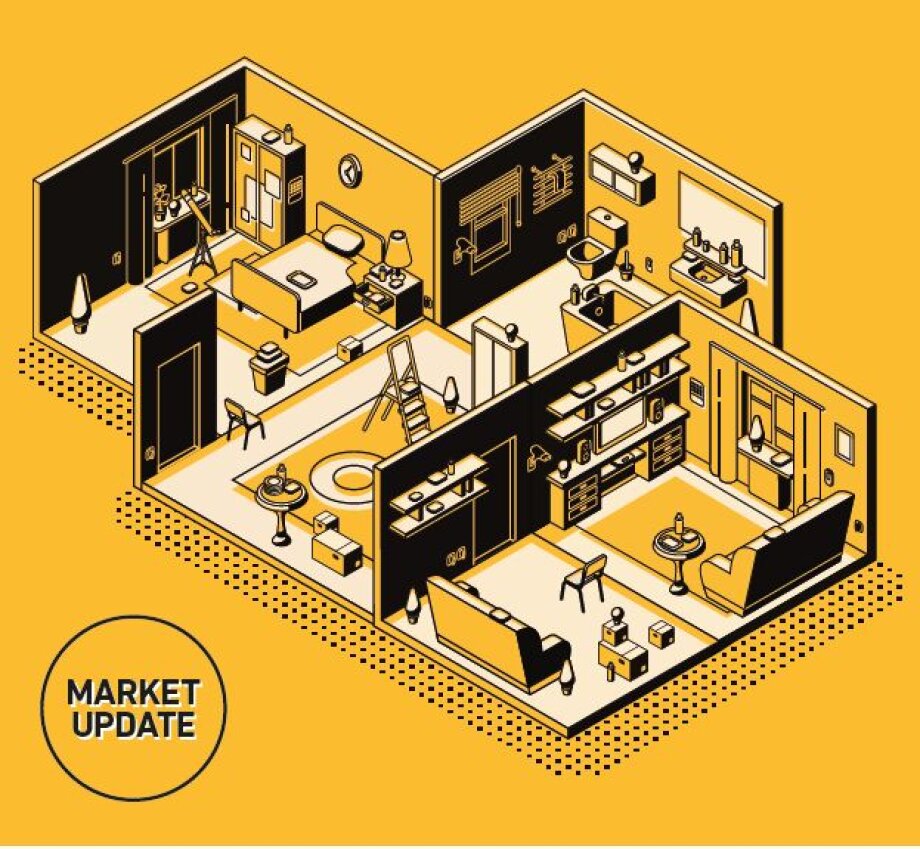Home and dry?
Poland’s residential real estate sector has managed to survive the first wave of the pandemic without sustaining deadly losses. It could make a modest recovery in the coming months. By Adam Zdrodowski

Poland’s residential real estate sector has managed to survive the first wave of the pandemic without sustaining deadly losses. It could make a modest recovery in the coming months. By Adam Zdrodowski

The Polish housing property market has been suffering from the outbreak of the coronavirus pandemic, but the impact has so far been smaller than had been expected. After the initial shock, buyers and developers alike stepped up their activity giving room for hope that the sector can go through the crisis seeing only a moderate slowdown. While it is still too early to make long-term forecasts, the facts that prices have remained stable and demand has perked up again seem to bode well for the industry’s near future.
BOTTOMING OUT
A total of 6,900 new apartments were sold in the six largest housing markets in Poland – Warsaw, Kraków, Wrocław, the Tri-City, Poznań and Łódź – in the second quarter of this year, a 64 percent decrease year-on-year, according to JLL data. The drop may seem significant, but one needs to remember that during the first few weeks of Q2 Poland was under lockdown. Sales accelerated in a visible way in the second half of the quarter after the most restrictive regulations were lifted.
The number of new units that came under construction in Q2 in the six markets in question amounted to 10,500 and was 19 percent lower than the number recorded in Q1 (when compared against the average quarterly number for the last three years, the decrease stood at over 30 percent). Nevertheless, experts argue that these results are still better than the forecasts made in the initial phase of the pandemic and reflect an improving sentiment on both the supply and the demand side.
Importantly, while the onset of the pandemic made it difficult for some developers to stick to their previously adopted completion schedules, the first six months of 2020 did not see housing developments being put on hold or abandoned altogether. The number of units on offer in the biggest residential markets in Poland (nearly 49,000) was over 10 percent higher at the end of Q2 than a quarter earlier, but it was still lower than the average level for the last three years and remained at what experts see as a healthy level.
Notably, while buyers have been expecting the crisis to bring about a major drop in apartment prices, nothing of this kind has actually taken place. At the beginning of the year, prices were rising due to demand for apartments exceeding supply and after the start of the coronavirus pandemic most large cities saw prices stabilize or even continue going up slightly. However, as the turnover in Q2 was relatively low, it remains to be seen how developers will shape their pricing policies once sales and completions have returned to more or less “normal” levels.
BUILDING AGAIN
There are still too many unknowns to foresee exactly when such a return could happen. Much will certainly depend on the availability of bank lending. At the beginning of Q3, demand for mortgage loans increased significantly (after a major decrease in the spring) with the number of applications filed in June having exceeded the number recorded a year earlier. However, as one could have expected, banks have reacted to the ongoing market uncertainty by increasing margins and tightening lending procedures in order to minimize their own risks.
On the other hand, with a lot of capital available in the market and investors still viewing residential property as a relatively attractive investment product, many apartment purchases in Poland are these days financed with cash, rather than bank loans. In its H1 financial report, Dom Development, the country’s largest residential developer, revealed that transactions financed with cash accounted for approximately 40 percent of all the apartment sale transactions concluded by the company in the period.
This could change if the situation in the rental market and thus the profitability of buying apartments for investment purposes deteriorated. For now, the general picture remains optimistic with the European Commission expecting Poland to witness a recession this year that will be one of the mildest among all EU countries. The Polish economy should rebound clearly in 2021. Developers seem to have already started launching and planning new residential schemes more boldly.
Kazimierz Kirejczyk, vice president of the management board at JLL, pointed to positive Statistics Poland (GUS) data for the January-August period. The number of new apartments that came under construction in that period was only down 14.4 percent y/y and the figure for August was similar to that for August 2019. The number of units for which developers got building permits between January and August was down 6 percent y/y. These data show the considerable resilience of the housing sector, Kirejczyk argued.